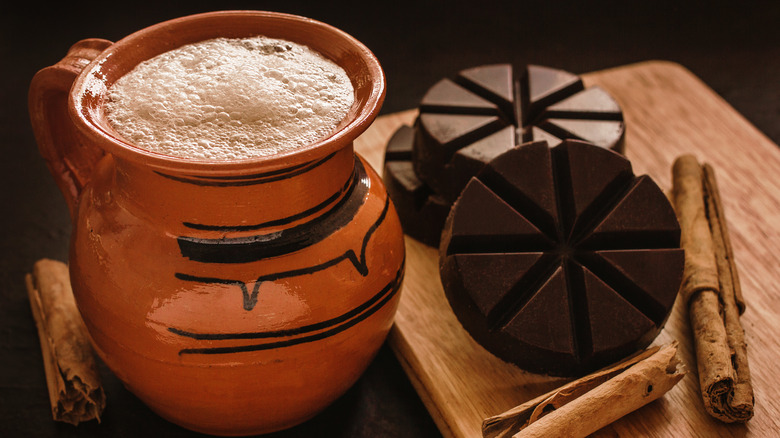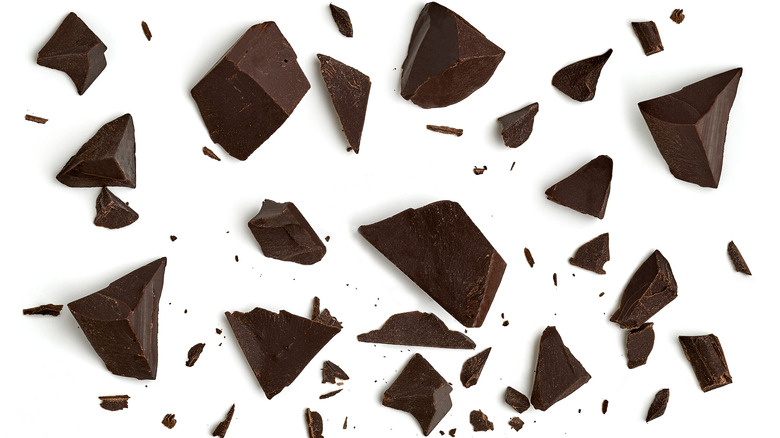The Creamy Ingredient Mexican Chocolate Leaves Out
As the place where cacao beans were first used to create chocolate, Mexico definitely has a lot of experience turning the beans into something delicious to enjoy. According to History, the ancient Mayans (and the ancient Olmecs of southern Mexico before them) were the first to transform the cacao bean into an early version of chocolate that was drunk, not eaten. In fact, for the majority of chocolate's 2,000-year history, it has been consumed as a beverage, not as a candy, per Smithsonian Magazine.
For centuries, the cacao bean was enjoyed by the residents of Central and South America before it was brought to Europe, according to History. Later, Europeans began to adapt chocolate to better suit their own tastes. As a result, the preparation of chocolate started to get a little sweeter. For example, as hot chocolate's popularity grew among the wealthy in Europe, sugar, cinnamon, and other seasonings were added. It wasn't until 1828, however, that a Dutch chemist came up with a way to create powdered chocolate, a precursor to modern solid chocolate products, per Smithsonian Magazine. Four decades later, the first chocolate bar was created by combining powdered chocolate, called Dutch cocoa, and melted cocoa butter. As early European chocolatiers began to experiment with recipes (think Cadbury and Nestlé), chocolate remained largely unchanged in Mexico.
Mexican chocolate doesn't use milk
Just as the cacao bean was transformed into a beverage for centuries, that's still how it's primarily enjoyed in modern times in Mexico, according to Choco Vivo. Chocolate in Mexico remains a fairly simple, unprocessed product made primarily of ground cacao, granulated sugar, and cinnamon, per The Spruce Eats. Unlike in Europe and the United States where milk is an important part of chocolate products, Mexican chocolate is made without it, per Choco Vivo. To be considered milk chocolate, the product must have 12% or more of milk (via Rock View Family Farms). Dark chocolate must have a minimum amount of 35% cocoa, and less milk.
Without the addition of milk or another dairy product, Mexican chocolate isn't as suited for snacking because it will usually have a grittier texture. Without the fat from dairy, the sugar that is added to Mexican chocolate doesn't dissolve, resulting in a sandy texture, although it is edible. Even without the milk, though, Mexican chocolate is still very flavorful. When the cacao beans are roasted and then ground into a liquor, the flavor is developed, per The Spruce Eats. In comparison, the European process of making chocolate involves aerating the chocolate liquor to get a milder flavor.
Considering its texture, the best use for Mexican chocolate is probably how it has been prepared for centuries: As a beverage (using milk or water), or transformed into a traditional sauce like mole, per Cook's Illustrated.

